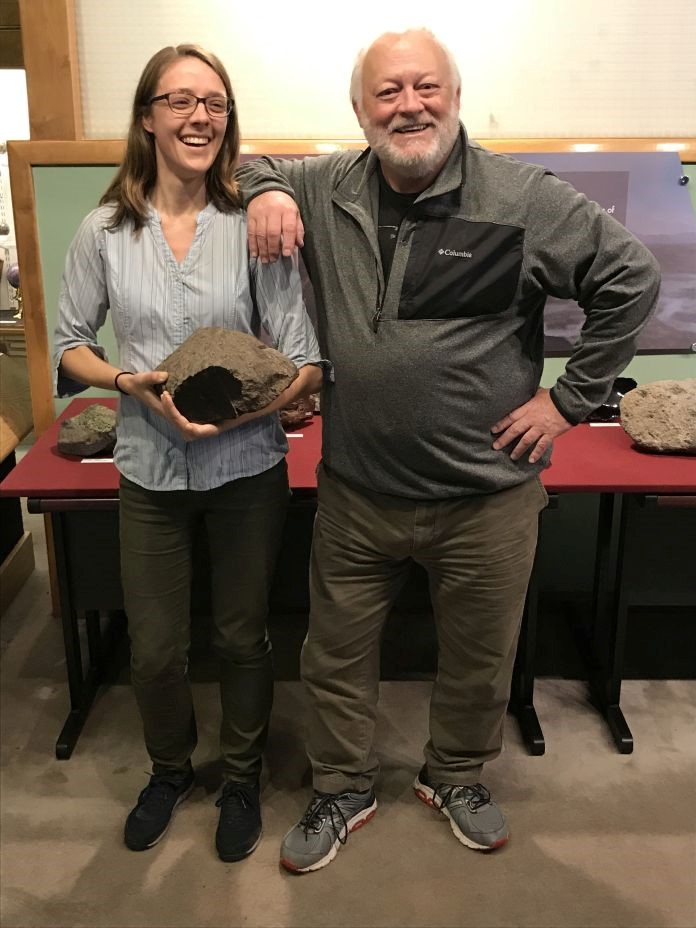The Rice NW Museum of Rocks and Minerals recently acquired the famed Morrow County meteorite, a 40-lb. specimen discovered by Donald Wesson in 1999 in Morrow County, Oregon. The cone-shaped space rock was already on display as part of a loaned exhibit, but is now a part of the permanent collection.

The Morrow County meteorite is noteworthy as an oriented specimen, meaning it did not tumble as it fell through Earth’s atmosphere. Instead, it settled into a fixed position, much like NASA’s famed Apollo spacecraft as they returned to Earth. The exterior of the Morrow County meteorite has distinctive flow lines left behind as heat from its fiery passage through the atmosphere melted away its surface. It also has a distinctive yellowish color due to weathering.
There is a notable anomaly to the Morrow County specimen. There is speculation that the tip of the meteorite’s cone was broken off when farm machinery encountered it. More recently, scientists sawed off a large section from the base to aid in identification.
The Morrow County meteorite is of great interest to scientists. A team of researchers at The Cascadia Meteorite Laboratory (CML) at Portland State University positively identified the rock as a meteorite. Further research by CML scientists Melinda Hutson, Alex Ruzicka, and Dick Pugh revealed that the Morrow County meteorite was once part of an asteroid that collided with another object 460 million years ago. The collision produced multiple fragments, one of which would eventually become the Morrow County meteorite after its journey to Earth.

“This is fantastic news for Oregon collectors and meteorite enthusiasts,†noted executive director Julian Gray. “We have been trying to acquire this specimen for years, and we are especially proud to be able to bring this specimen ‘home’ to Oregon. This important acquisition reinforces the Rice Museum’s commitment to the Pacific Northwest rockhounding community and to the preservation of scientifically important specimens. We hope that stories like the discovery of the Morrow County meteorite will spur other collectors to find the next Oregon meteorite.†he added.
Gray also expressed thanks to the Rice Museum curator. “This was a great trade. I want to express special thanks to curator Leslie Moclock, who completed the trade with famed mineral collector Ed Thompson. We appreciate Ed’s dedication to our museum.â€

The museum also acquired a new 125-pound Campo del Cielo iron meteorite specimen, and it, too is on immediate display. The two new meteorites were traded for the museum’s 200-lb. Gibeon meteorite specimen, a common iron meteorite from Namibia. The Campo del Cielo iron meteorite is an interesting addition to the museum’s “hands-on†display, because unlike many mineral specimens, the Campo actually benefits from human contact. The surface, when first discovered, tends to be rusty and can flake. The oils in our skin, combined with handling, tends to clean and polish the surface. “The oil from human hands is like magic for the care and curation of any Campo Del Cielo,†Thompson explained. The museum invites visitors to explore the entire meteorite collection to learn more about these fascinating rocks from space.
